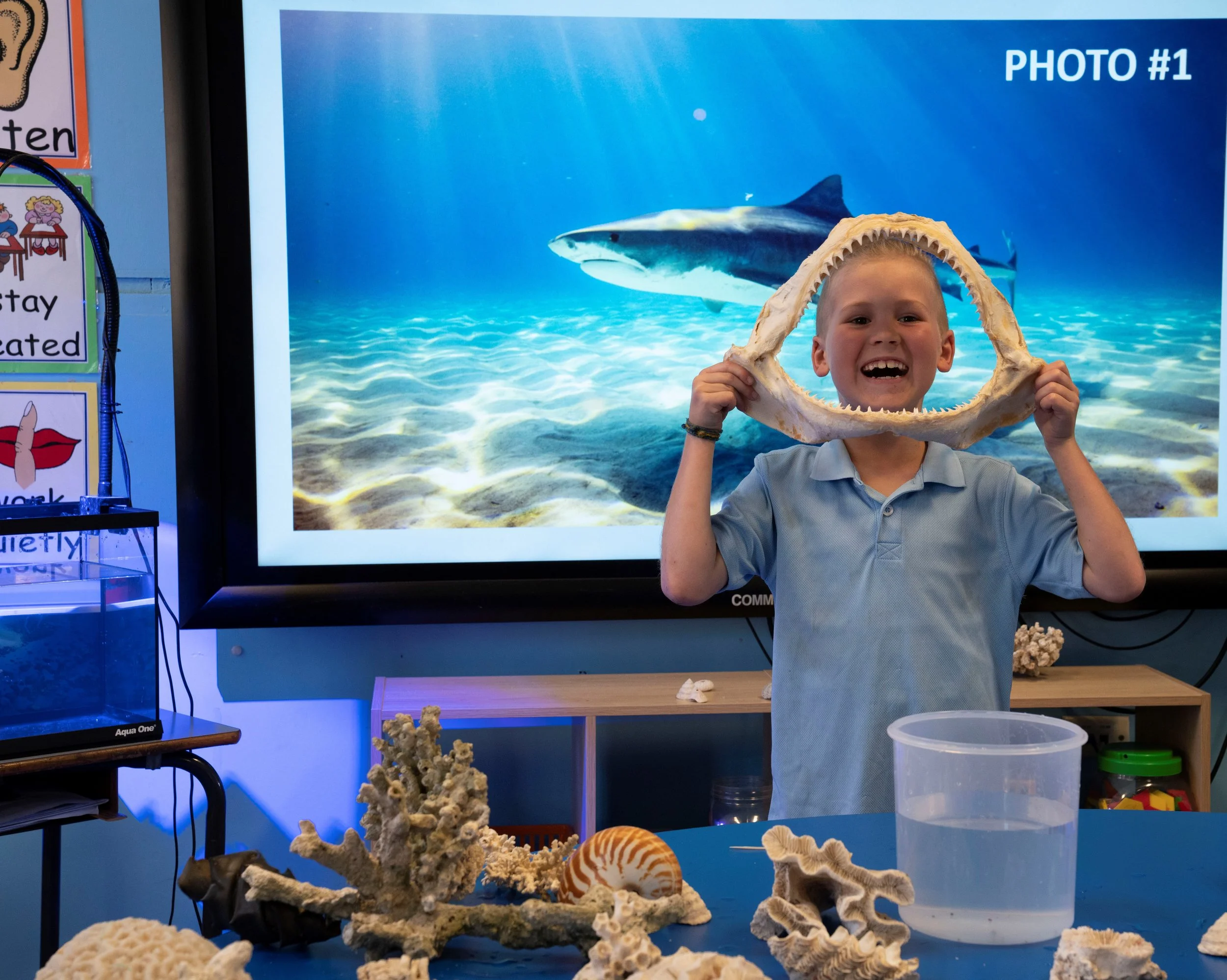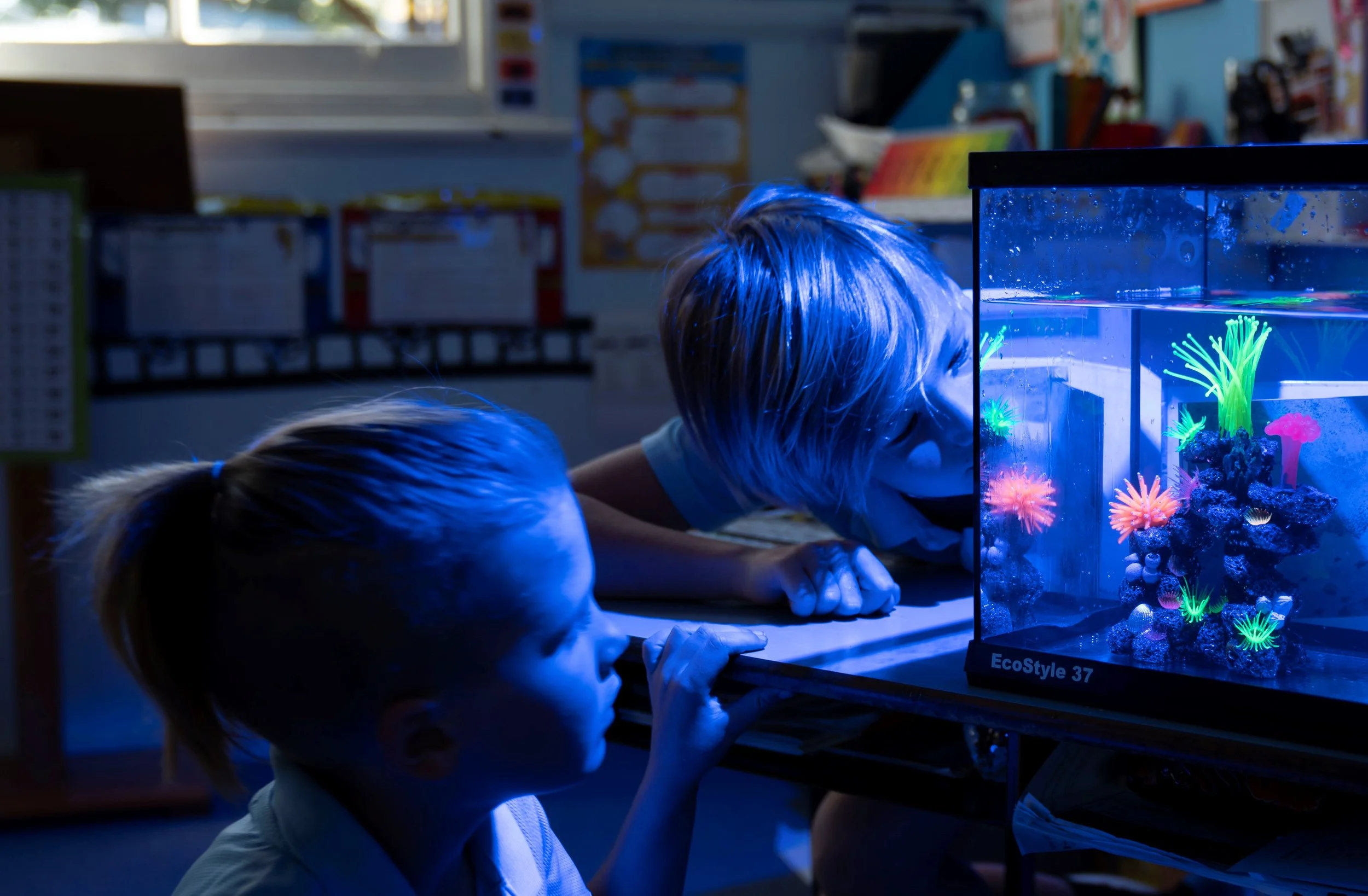Our programs have clear and direct links to numerous KLA Syllabus Stage Statements, Outcomes, Objectives, Aim Statements, Content and Cross Curriculum learning. Our interactive program will inspire your students’ sense of curiosity, inquiry and investigation and encourage them to pose questions and make conclusions.
Additionally, the interactive experience had by the students can be an engaging tool for creative and / or descriptive writing post our visit.
Examples of how our programs directly link to KLAs include but are not limited to :
Sustainability : A key learning focus across many KLAs and can be difficult to teach and program for. Our presentations have an embedded focus not only on the amazing diversity of marine life, but also on the threats they face and the role each individual can play in their conservation. A clear message of interconnections between humans and places is given.
Fundamental sustainability elements of our presentations include :
Students are challenged to ask “What difference can I make?”
Plastic pollution / Recycling - a designated and interactive ‘pollution demonstration’ display aquarium as part of every presentation.
Warming sea temperatures / coral bleaching - real life examples for students to handle of bleached coral, coupled with a step by step explaination of how and why corals are bleaching.
Over fishing - real life demonstration of the effects of ‘ghost nets’ and other aspects of poor fishing practices.
Solutions - students will be challenged to think about how they can make a difference to their local and the wider marine environment.
Enviroment and Change : A fundamental learning area throughout the Geography Syllabus. Our programs address the themes of how the environment supports and enriches human and other life by providing raw materials and food, absorbing and recycling wastes, maintaining a safe habitat and being a source of enjoyment and inspiration.
Linked Outcomes include but are not limited to :
Early Stage One
Science and Technology - Living World / Geography - People live in places
Inquiry and Focus Questions
What do we notice about living things?
How can we look after the places we live in?
How can living things be used to meet our needs?
What makes a place special?
GEe-1 identifies places and develops an understanding of the importance of places to people.
STe-2DP-T develops solutions to an identified need.
STe-3LW-ST explores the characteristics, needs and uses of living things.
Stage One
Science and Technology - Living World
Inquiry and Focus Questions
What are the external features of living things?
How can we improve a local environment to encourage living things to thrive?
How do living things change as they grow?
GE1-1 describes features of places and the connections people have with places.
ST1-4LW-S describes observable features of living things and their environments.
GE1-2 identifies ways in which people interact with and care for places.
Stage Two
Science and Technology - Living World
Inquiry and Focus Questions
How can we group living things?
What are the similarities and differences between the life cycles of living things?
How are environments and living things interdependent?
GE2-1 examines features and characteristics of places and environments.
GE2-2 describes the ways people, places and environments interact.
ST2-4LW-S compares features and characteristics of living and non-living things.
Stage Three
Science and Technology - Living World
Inquiry and Focus Questions
How do physical conditions affect the survival of living things?
How do the structural and behavioural features of living things support survival?
Why is it important for food and/or fibre to be produced sustainably?
GE3-1 describes the diverse features and characteristics of places and environments.
GE3-2 explains interactions and connections between people, places and environments.
ST3-4LW-S examines how the environment affects the growth, survival and adaptation of living things.












![DSC08819[1].jpg](https://images.squarespace-cdn.com/content/v1/5c9d898ca9ab9540808cf5b8/1567935335873-6E88D5X3707QUS101HAW/DSC08819%5B1%5D.jpg)


![DSC08796[1].jpg](https://images.squarespace-cdn.com/content/v1/5c9d898ca9ab9540808cf5b8/1567943020963-OFG9YUQ09CDT8JUF02OS/DSC08796%5B1%5D.jpg)




